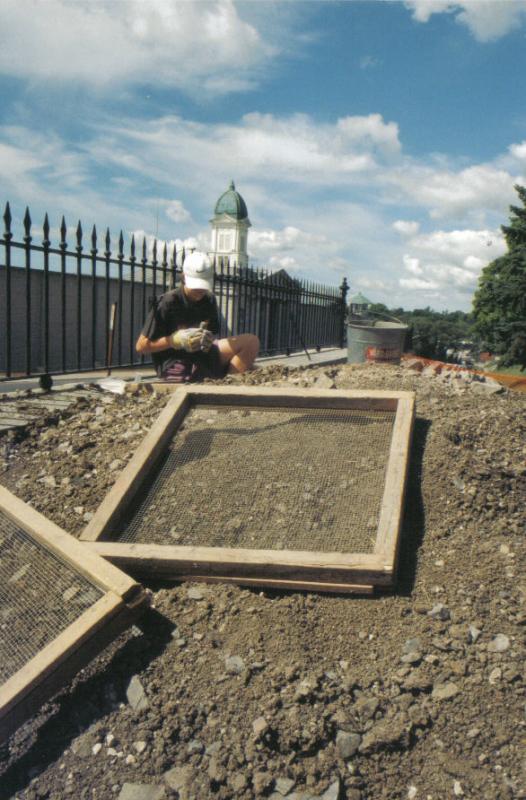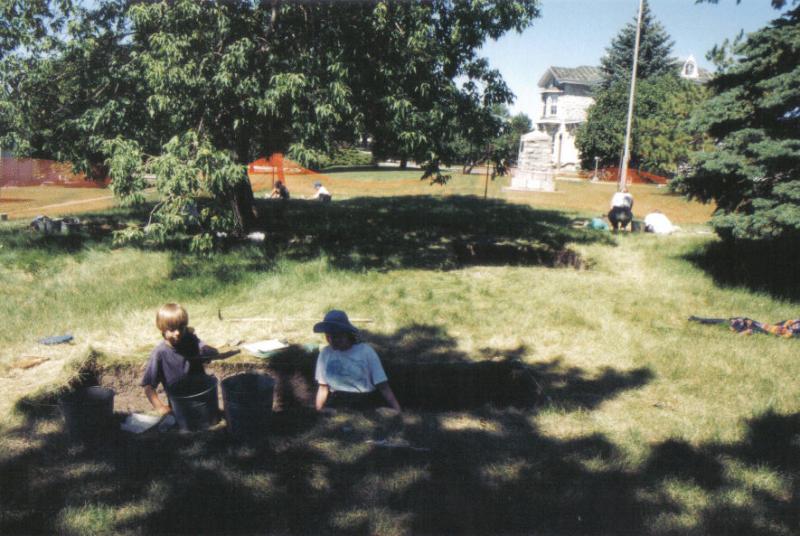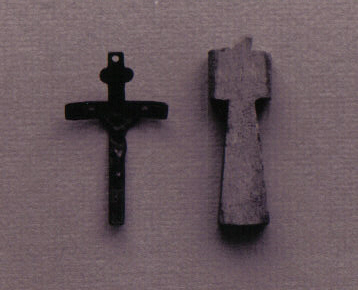
This year’s summer "Can You Dig It?"© Summer Archaeology Program saw a total of 37 participants, aged 8-19, who assisted in all aspects of the excavation providing 777 hours of field time. The 1997 “Can You Dig It?”© program was conducted for 5 one-week long sessions between July 8 and August 21. This year’s site was the front lawn of the Correctional Service of Canada Museum, at the extreme South-East corner of the "Cedarhedge" grounds, located on the corner of King Street West and Sir John A. Macdonald Boulevard in Kingston, Ontario.
The possibility of investigating the site to gather information on occupation prior to the construction of the Warden's Residence in 1871 was of interest, since little is known of the early development of the Kingston Penitentiary property outside the walls of the institution. In addition, archival research has indicated that the militia was stationed at this location during the Upper Canada Rebellion in the 1830s and then the Fenian raids of the 1860s.
The period of 1833 to 1873 was of particular interest to us, since in 1833 the construction of the "Provincial Penitentiary of Upper Canada" (adjacent to this particular site) began. As well various extensive settlement and construction projects, including the establishment of "Portsmouth Village" itself, were carried out in the immediate area subsequent to the commencement of the penitentiary project. The later date of 1873 represents the completion and occupation of "Cedarhedge", the Kingston Penitentiary warden's residence built for Warden John Creighton and his family. This building was erected immediately across King Street from the main-gate of Kingston Penitentiary. It is this  building that now houses the Correctional Service of Canada Museum.
building that now houses the Correctional Service of Canada Museum.
Three structural elements probably relating to the militia occupation were identified and the artifact content was relatively high. It was found that a large amount of fill had been placed on the site after completion of construction of the Warden's Residence. The structural features consisted of a substantial mortared limestone wall, a mortared limestone wall fragment, a possible porch footing and a limestone drain.

A total of 4,356 artifacts representing the early 19th through to the mid 20th century period were uncovered. There were several interesting artifacts including: a carved bone cross; metal crucifix; fragments of a Collins oil lamp burner; an 1844 shilling; a two-tined ferrous pitch fork head; a brown glass seal marked 'BRUN FRERES BRANNE MOUTON; a variety of bone and wood handled cutlery; clay smoking pipe fragments including an effigy bowl; buttons; slate pencils; and architectural hardware.


 building that now houses the Correctional Service of Canada Museum.
building that now houses the Correctional Service of Canada Museum.
